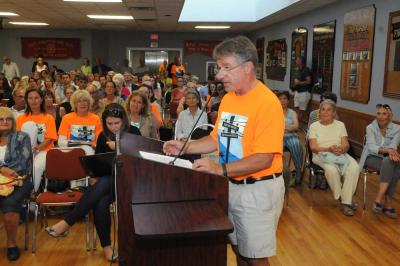Skydiver Flown To Atlanta For Treatment
Skydiver Flown To Atlanta For Treatment

Chris Scott, a 27-year-old whose family has a house in Springs, was flown on Tuesday to an Atlanta hospital specializing in spinal cord injuries, nearly a month after a skydiving accident in Calverton. Gary Messina, a 25-year-old New York City correction officer, died when their tandem jump went horribly wrong, and Mr. Scott, a top Skydive Long Island instructor, was left a quadriplegic.
While the Federal Aviation Administration is still investigating the cause of the accident, Mr. Scott’s family is focused on his rehabilitation, and his friends are trying to raise money to help with his long-term care.
Steve Scott said his son is paralyzed from the neck down, unable to breathe or eat on his own, and only able to mouth words. Until Tuesday, he was in the intensive care unit at Stony Brook University Medical Center, where he was flown immediately after the accident.
“If there’s any luck in the tragedy, there’s no cranial damage whatsoever,” Mr. Scott said.
The young man’s family has been working with the Christopher & Dana Reeve Foundation, which led them to the Shepherd Center in Atlanta, regarded as one of the pre-eminent spinal cord injury rehab hospitals in the world, where he will receive the latest and most progressive treatment. His life support equipment was moved there with him on a Medevac flight.
The family hopes he will be able to return to Sound Beach, where he now lives, though when is uncertain. “They’re doing unbelievable things in spinal cord injury cases,” his father said. “Chris just turned 27 — he’s so young. In 5 or 10 years, who knows what is going on. Hopefully, he’ll be in better shape than he is today.”
His medical expenses are largely covered under workers’ compensation since he was working at the time, Mr. Scott said. “What it doesn’t cover, and what our concern is, it doesn’t cover housing, food, clothing, shelter for the rest of his life.”
To help, his skydiving buddies have set up a fund-raising site: helpchrisscott.com. Donations may also be made by check, made out to Marie Scott, his mother, at UBS Financial Services Inc., 1 State Street, Floor 16, Hartford, Conn. 06103-3102.
“We are all trying our best, but we’re all absolutely devastated,” Mr. Scott said.
His son grew up in New York City, attending P.S. 6 and York Prep, and was introduced to skydiving while a student at the University of Arizona. “He fell in love with the sport,” his father said. He became an instructor at a drop zone in Tucson before moving back east, and had worked for the last four or five years at Skydive Long Island, which operates a training school from a hangar near Calverton Executive Airpark.
“I think he had something close to 6,000 jumps at the time of the accident,” Mr. Scott said, adding that his son was rated one of the leading skydivers in the United States. “Skydiving is extremely physical, particularly for instructors. Some days, he’d do 20 tandem jumps in a single day.”
He described Chris as an outdoorsman and a free spirit who loved fishing and surfing at beaches in Montauk and Amagansett, where he lived for a time during college while working as a landscaper. “He was a tremendous athlete. He loved sports. He was an outdoors person — he never wanted to work in an office.”
He was aware of the risks associated with skydiving, his father said. In fact, father and son had discussed its perils over dinner about two weeks before the accident. “He always defended it,” said Mr. Scott.





